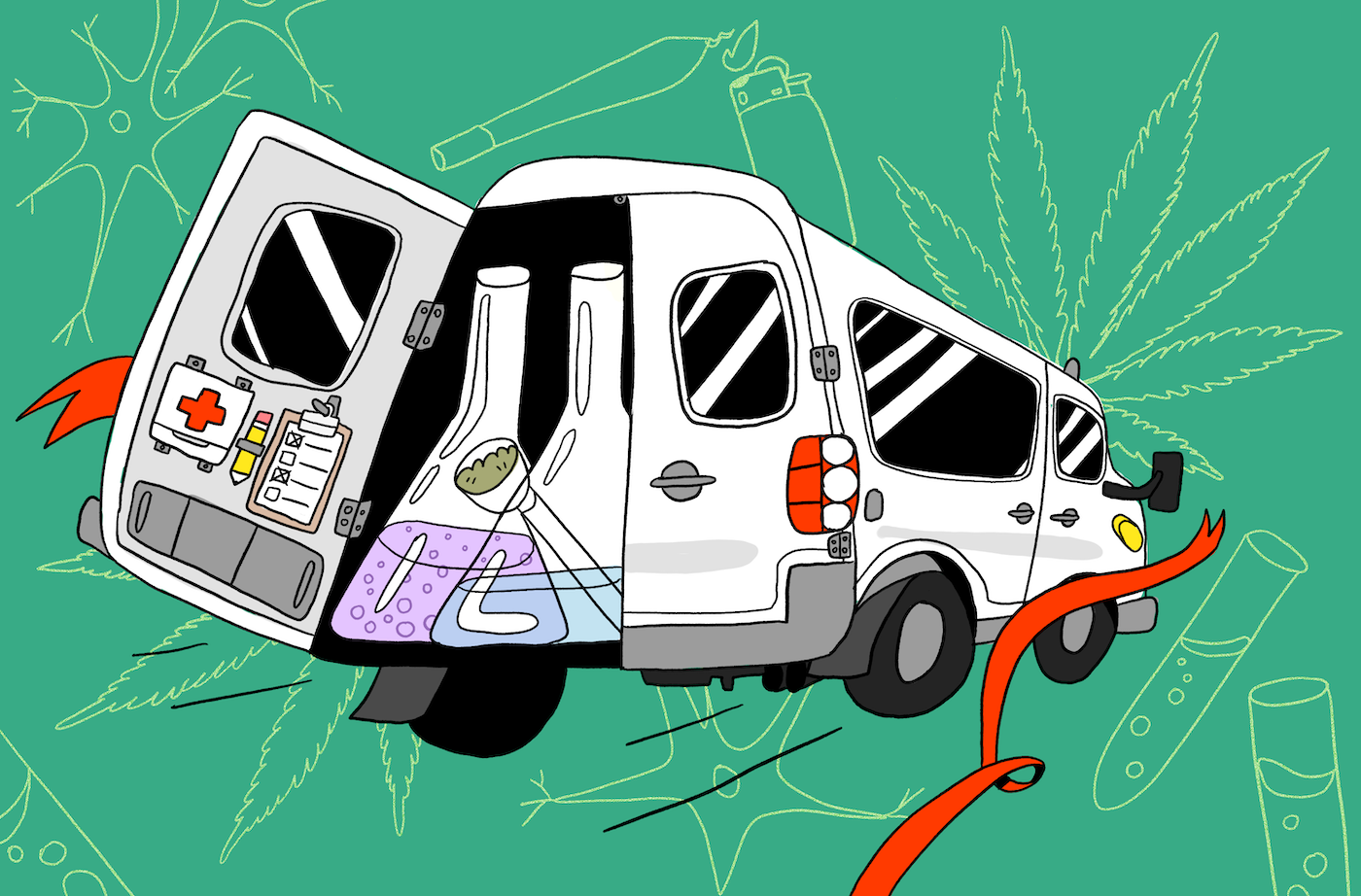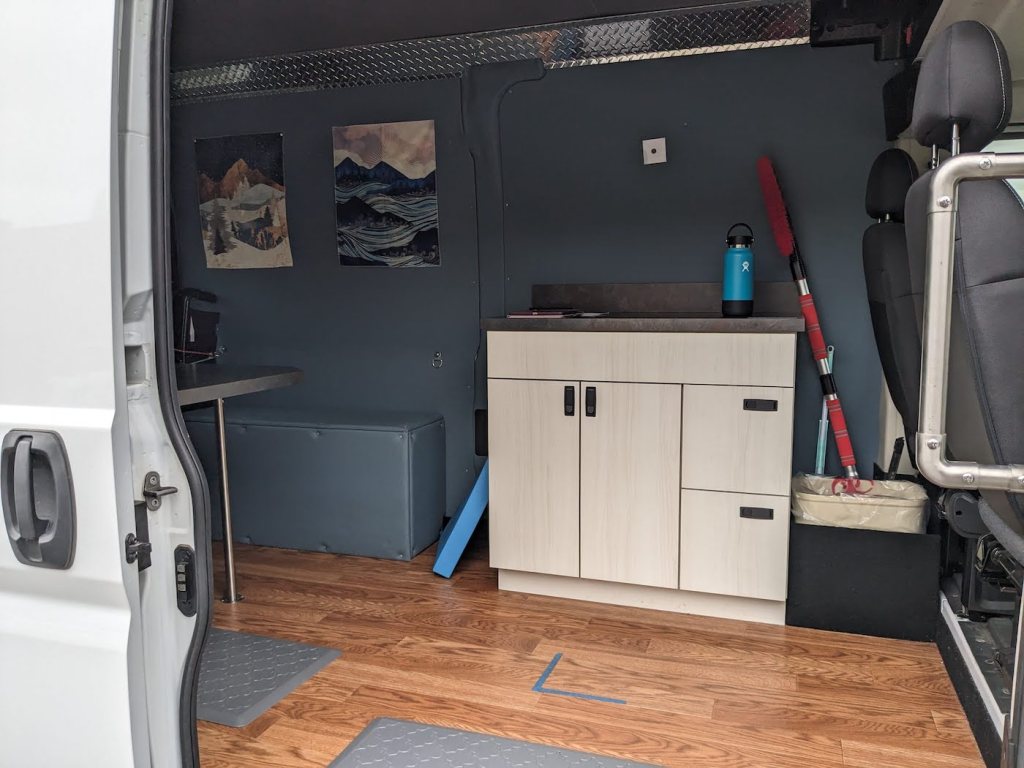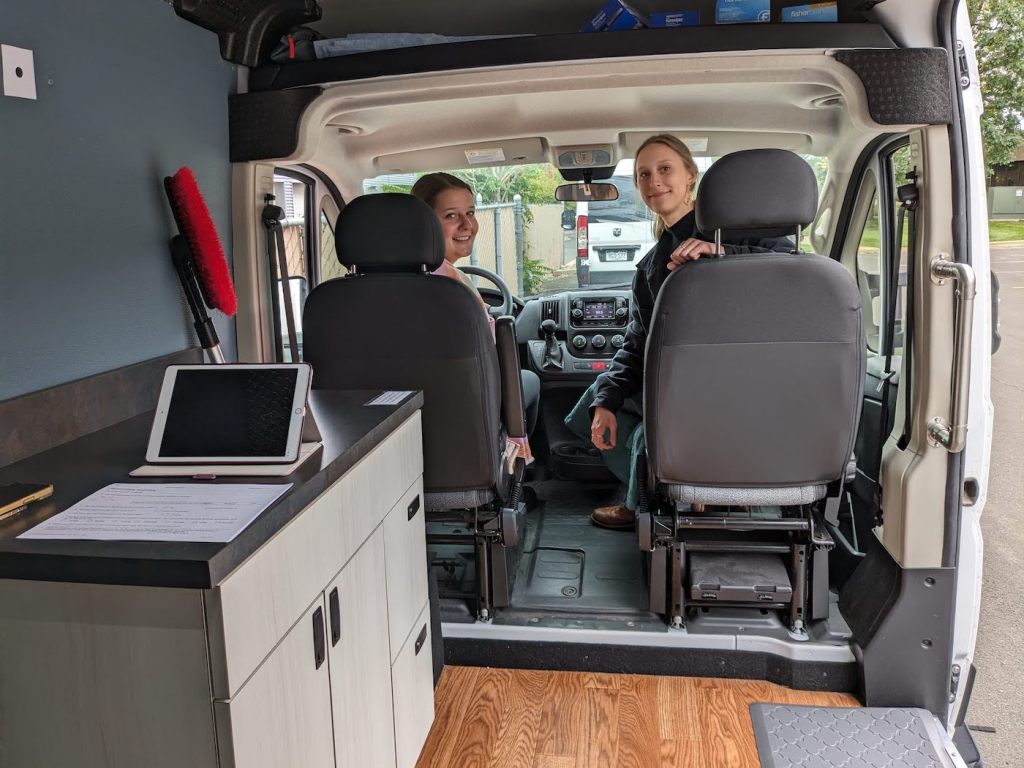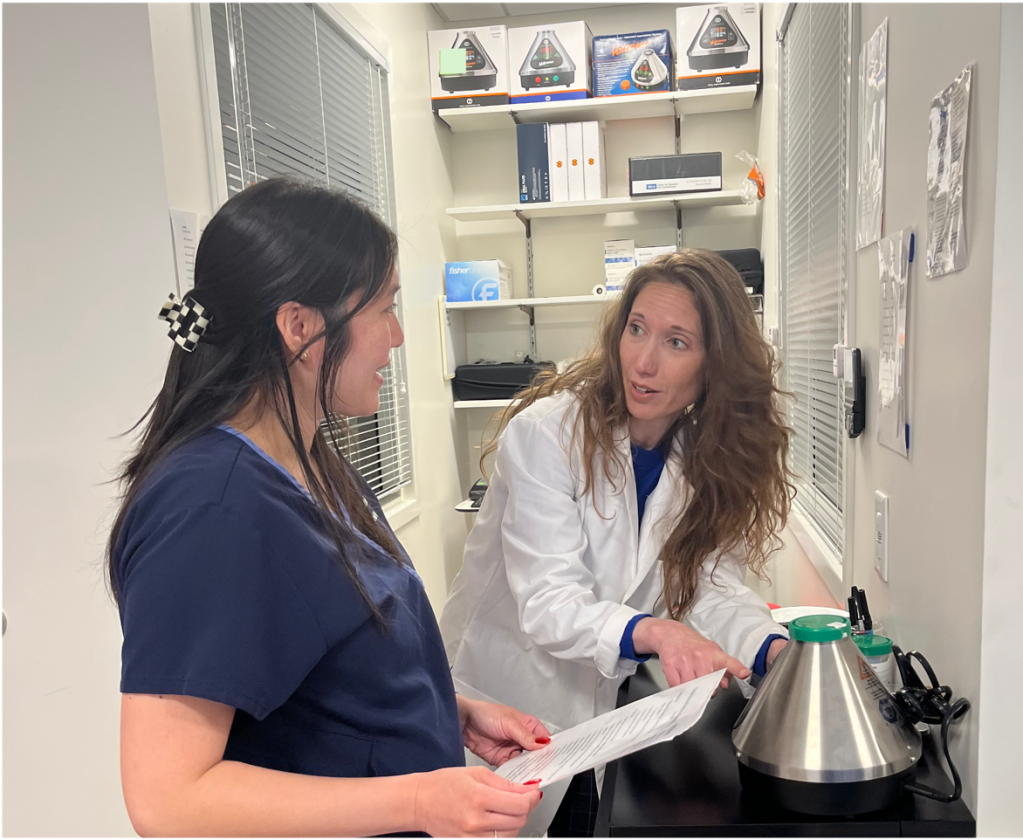Federal Law Makes Weed Research Complicated. Can A Van Help?
Scientists want to understand how commercially available cannabis products affect users. They have to get creative to research it legally.

Illustration by Sahra Denner for Science Friday
To understand the effects of cannabis use on exercise, scientists drove stoned people to a tiny gym and watched them sprint.
The experiment was a part of a recent study from the University of Colorado Boulder, which upended expectations that the drug would cause sluggishness and low energy. While cannabis didn’t enhance users’ performance, it did improve their mood during the run, which mimicked the sensation of a “runner’s high.” Getting those precise results took a lot of planning, including outfitting a special van so researchers could shuttle high study volunteers from their homes to the research space. These extra steps (and vehicles) were necessary to make the study legal. Because even though it’s legal to use cannabis in Colorado, there are federal restrictions on researching it—including which cannabis can be studied at all.
Cannabis use in the U.S. has risen dramatically among both young people and older adults as more states have legalized it over the past decade. And researchers across the country want to understand how the products millions of people now have access to can affect our health. “There’s all of these questions that users and patients want to know the answers to that we just don’t have yet,” says Dr. Angela Bryan, a co-author of the exercise study and principal investigator at CU Boulder’s health and risk behavior lab, CUChange.
In order to study the weed that’s legally available at dispensaries, she designs her studies so cannabis never enters her lab.
Cannabis is classified as a Schedule I drug by the Drug Enforcement Administration (DEA), meaning that it’s deemed to have a high potential for abuse, and there is no federally accepted medical use for it—regardless of whether it’s legal to use in a given state. Researchers at universities that receive federal funding can’t give study participants cannabis on campus unless they register with the DEA. And even then, they can only use limited cannabis products provided by a short list of approved growers.
For scientists who do obtain cannabis through the DEA for on-campus research, lengthy registration and transaction processes along with the limited choice of products can be a substantial challenge. Before 2022, there was only one lab that grew and produced DEA-approved cannabis products, and researchers complained that those were of lower quality and had a much lower THC content than what’s on the legal market. Also, research-grade manufacturers historically haven’t been able to replicate the diversity of commercial products like vapes, high-potency THC concentrate, and edibles that are popular in legal states. To research products that are comparable to what users have access to on the legal market, some scientists have elected to forgo a DEA registration entirely.
Bryan’s research questions were specifically about how commercial cannabis products affect users. So, CUChange worked with the CU Boulder legal team and their human subjects committee to develop the “CannaVan,” also referred to as the mobile research laboratory.
“We landed on the solution of, ‘Well, if we can’t bring the people to the lab, we’ll bring the lab to the people,’” Bryan says. In 2017, CU Boulder’s fleet of CannaVans hit the road, helping researchers study the effects of cannabis on consumers in Boulder.

Conducting research with the mobile lab sometimes involves parking outside a participant’s home, where the person will independently use their product and immediately go out to the van to complete an experimental procedure, like a cognitive test or a blood draw. Other times, the van will simply transport participants from where they use their cannabis to campus, where the researchers can perform tests in a lab. The researchers don’t buy the cannabis themselves, but instruct study participants to purchase the product from a given list of vendors.
Some of the researchers have noticed that study participants share their curiosity about cannabis. Madeline Stanger, a professional research assistant on a project focused on older adults, says that the participants she’s worked with are curious about trying a new treatment option that might improve their quality of life.
“It’s so encouraging when people are like, ‘This is a miracle.’ And then we get people that are like, ‘This isn’t having any effect at all.’ It’s really satisfying when people are benefiting from it, but it’s also good to know what isn’t working,” Stanger says.
So far, CUChange studies have investigated questions about a number of different aspects of cannabis use. Along with the effects of cannabis on physical activity, researchers have learned more about how high-potency THC concentrates affect the body, and how cannabis affects sleep. One of the lab’s studies from 2020 found that smokers who used 70%-90% THC concentrate reported similar levels of intoxication as smokers who took a product at about a quarter the potency. Those results could point to a “tolerance” effect for regular cannabis users, or a saturation point in cannabinoid receptors, but more research is needed.

Even though the team has learned a lot, Bryan acknowledges there are limitations to driving around the DEA. For example, some of their experiments require participants to buy their own cannabis products and document how much they consume. Drug trials where participants don’t know which product they’re consuming are generally considered better at measuring the drug’s isolated effect, because they eliminate the factor of the participant’s awareness. “It’s hard for us to have that experimental control,” Bryan says. “We always have to be cautious when we talk about our findings, understanding that people knew exactly what they were taking.”
Bryan and her colleagues’ research goals and generous funding have led them to unique methods, but the laws that make that necessary affect scientists across the US. Teams studying cannabis at different institutions take different approaches based on the questions they want to answer and the resources they have available.
Dr. Carrie Cuttler, an associate professor at Washington State University and the director of its Health and Cognition Lab, has watched research participants use cannabis over Zoom for some of her studies. Her lab has investigated links between cannabis and creativity, as well as the drug’s effects on cognition, mental health, and stress. She developed her research methods with Washington State authorities, and created a procedure where she watches participants use cannabis remotely. “I just observe a legal act,” she says.
Cuttler says the Zoom method lets her avoid illegal entanglement with a Schedule I drug, but a drawback is she’s unable to take the physiological measurements, like blood draws or heart rate, that the mobile laboratory enables. However, because the participant is on camera, Cuttler’s team is able to see one thing the CannaVan team doesn’t: how the user is actually consuming the product. “We time the duration of inhalations. We time the duration of holds. We count puffs,” she says. “We make sure they’re using the product that they were randomly assigned to use.”

Other approaches to researching without a DEA registration include analyzing international cannabis use data from countries like the Netherlands or Canada, and requesting self-reported data from users in the US. However, despite the hurdles, many scientists’ cannabis research interests lead them to opt for DEA registration.
For example, Dr. Ziva Cooper, director of the UCLA Center for Cannabis and Cannabinoids is DEA registered, and for her experiments she can securely store cannabis on campus, check its THC and CBD content, and administer it in an exact quantity.
“Here, it’s like an uber controlled environment,” Cooper says. Her research questions are about the isolated, controlled effect of cannabinoids on the human body, not the effects of typical legal drug use. “Why do I use that [DEA] farm?” she says, “It essentially goes back to, why do I do the type of science I do?”
Bryan says scientists trying to understand the health effects of cannabis are barely able to keep up with the booming cannabis market, which is producing easily accessible, chemically diverse products that are more potent than ever. At the same time, cannabis is being used in a medical context in over 35 states.
In 2018 and 2022, respectively, the Farm Bill and Medical Marijuana and Cannabidiol Research Expansion Act were signed into federal law, expanding access to cannabinoids for researchers. But Bryan says it looks like the sale and use of cannabis in Colorado will continue to evolve faster than the DEA and FDA’s product offerings for researchers. Cannabis’s Schedule I status has made research harder, but Cooper says there are other issues “above and beyond that” that make the work difficult, like producing a research-grade cannabis supply and finding funding to begin with.
Earlier this month, the U.S. Department of Justice proposed that cannabis be rescheduled to Schedule III, the same class as codeine. In a 2023 interview before the reschedule was proposed, Dr. Igor Grant, director of University of California Center for Medicinal Cannabis Research said such a change would make research a lot more practical. For one, the tightest security requirements on storage of the drug would be relaxed, making research less costly, Cooper says. But even if cannabis is reclassified, the impracticalities of research wouldn’t disappear overnight, Grant said. “You’re still dealing with something that’s federally seen as an addictive substance, and regulated.”
One thing that could change is how cannabis products are made. Right now, the FDA does not apply any safety standards to them because the drug is federally illegal. But if it moves to Schedule III, the FDA could publish standards for cannabis products under the Federal Food, Drug, and Cosmetic Act. That could make cannabis products safer, Cooper says, but urgent questions about how legal products affect users continue to surface.
“Until cannabis is taken off the schedule completely (like nicotine or alcohol) we can’t bring legal market products into the lab,” Bryan said in an email. Those who want to research state-legal products will have to continue using workarounds.
“We really want to do work that ultimately improves public health,” Bryan says. “We want to do it in a way that’s rigorous in terms of the science, but has direct application to improving people’s lives.”
Emma Lee Gometz is Science Friday’s Digital Producer of Engagement. She writes SciFri’s “Science Goes To The Movies” series and is a journalist and illustrator based in Queens, NY.